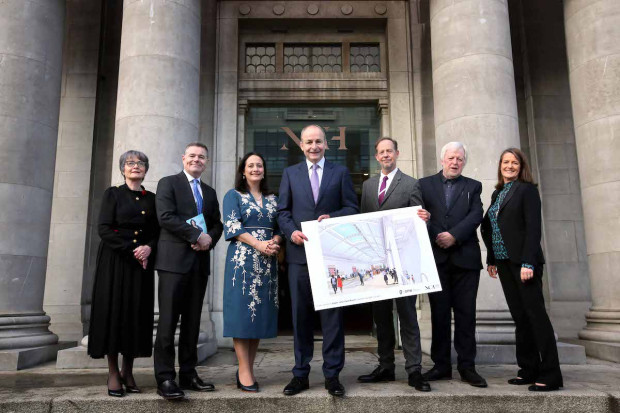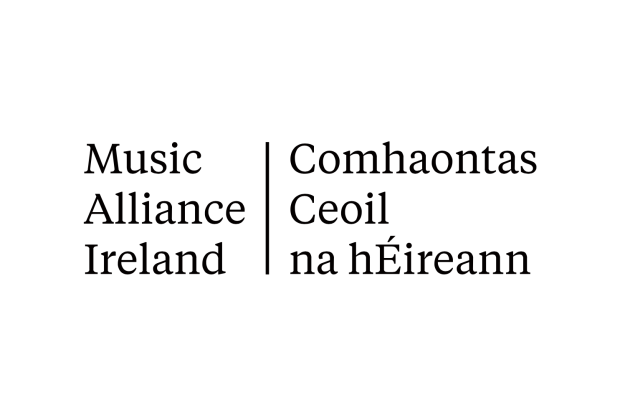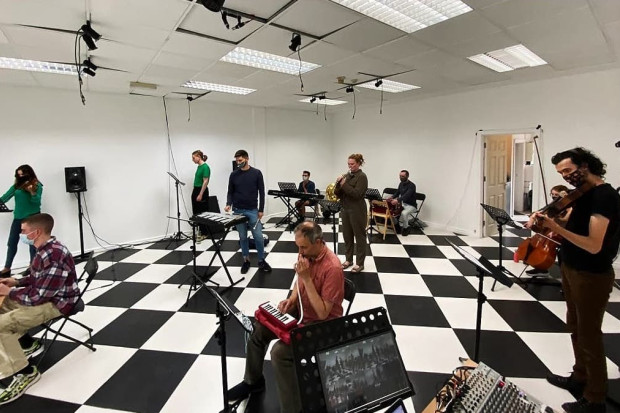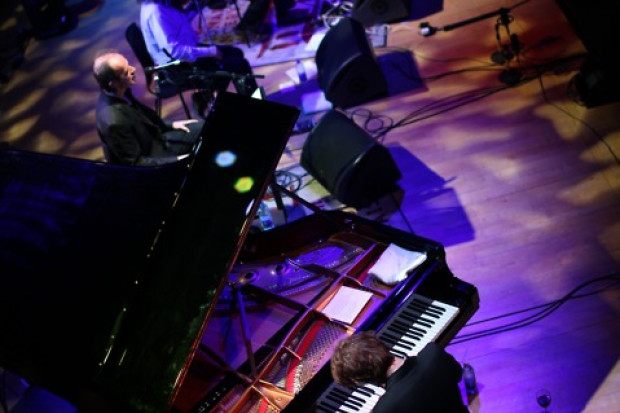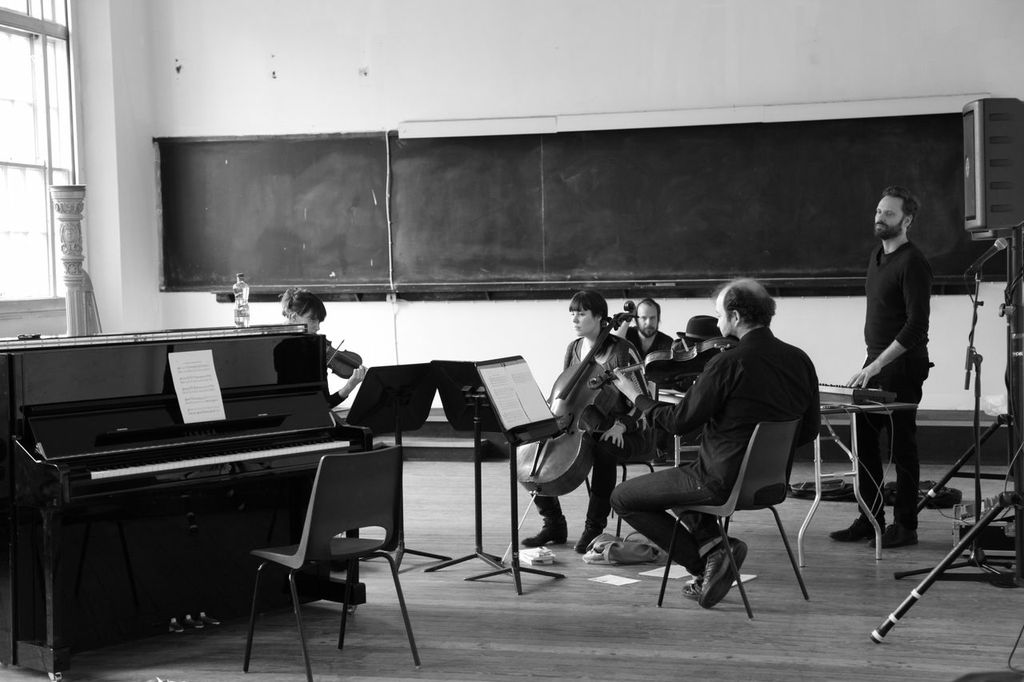
A performance in one of the lesser-used rooms of the National Concert Hall.
New Music Dublin
One of the biggest of the difficulties facing a contemporary music festival such as New Music Dublin is programming and balance: the question of how to bring together an immense range of styles and aesthetics connected by nothing more than having been written in the past fifty years. How does one free new music from the tokenism of many chamber and concert hall performances and remind us of its vibrancy and value? This was the feat the first New Music Dublin festival achieved with elegance and brilliance; not emergency surgery as was whispered among the audience at the festival’s beginning, not a necessary injection to bolster a foundering art; this was a celebration and exploration of a range of musics that surpassed the brief of its predecessor-in-scale, the RTÉ Living Music festival, which last ran in 2008.
The result of evident consideration by the organisers — the National Concert Hall, the Contemporary Music Centre and RTÉ Orchestras, New Music Dublin was a balance of major influential works of the past half century and the brand new. This approach was introduced by a ‘journey through time’ in the festival’s first concert featuring Garth Knox and Salterello, who played with an energy that defined the mood of the festival to come. Each ensemble across the festival found its own approach to bringing together works across the world and across styles and its own way to link often disparate works in context. Of all the events I attended, Crash Ensemble presented a standout chamber concert, with a programme that included an immersive Georg Friedrich Haas String Quartet, which saw the players arranged at four corners around the audience, and the Irish premiere of Heiner Goebbels’ Red Run (Nine Songs for Eleven Instruments), a work constructed out of individual solo passages.
The weekend’s orchestral programmes were on the whole as inventive as the chamber ones, though marred with the occasional low note. Despite a tenuous thematic connection, the vicious impact of a performance of Louis Andriessen’s iconic De Staat (a work which many composers across the weekend cited as a transformative one in their own musical experience) was dulled through its pairing with a somewhat flat performance of Arvo Pärt’s meditative Symphony No. 4. Some, myself included, found friday night’s concert with the RTÉ National Symphony Orchestra a bizarre affair, with special guest conductor Christian Lindberg’s own Kundraan and the Arctic Light a self-indulgent and inane work to my taste.
The other main auditorium events, however, showed how the festival recognised the importance of new approaches to contemporary music presentation. A flurry of composers, musicians and producers that marry composition techniques from a Western classical tradition with popular, cinematic or other aesthetics has in recent years blown the world of new music wide open to whole new audiences. A late concert with a performance by the expansive ambient mix of A Winged Victory For the Sullen was one of the most anticipated and the most talked-about of the festival. Sunday night’s double headliner paired the Hilliard Ensemble with the Icelandic musician/composer/producer Jóhann Jóhannsson, whose set featured music for string quartet, piano and electronics that oscillated between huge, crunching textures and melancholic minimalism.
The festival also showcased some of the other rarely-seen spaces in the National Concert Hall building, from larger concert spaces such as the Engineering Library to the smaller rooms ideal for use for workshops, installations and small-scale performances. The 1:1 Concerts in these small second-floor rooms gave an opportunity for concert-goers to engage with selected works on an intimate basis: an opportunity that was grasped whole-heartedly by musicians and public alike, with children animatedly exploring the instruments and sounds. Simultaneously, the Creative Labs, and open projects like the Here is the NEWS… choral workshops, gave anyone interested access to the process of new music creation, with a particular emphasis on collaborative processes (for example in Karen Power’s audiovisual work with Max le Cain or between performers and composers like Michelle O’Rourke and Evangelia Rigaki) as well as the development of new technologies (the use of tuning forks, motion controllers and Irish language translation software).
What was, I felt, lacking from the festival’s main billing was greater scope for the elements of new music that reside outside the concert hall. Installations, multimedia works and experimental music performances could be considered to be still somewhat in the shadow of chamber and orchestral performances and the lack of works of this type in the main programme was noted by many I spoke to at the festival. Perhaps this is even something that could even be addressed in the National Concert Hall’s ongoing programming as well as future festivals by using the ready resources of the venue’s many smaller rooms for regular installations or alternative performances.
Published on 30 April 2013
Anna Murray is a composer and writer. Her website is www.annamurraymusic.com.












